- Submissions

Full Text
COJ Electronics & Communications
Planets in Milky Way
Manu Mitra*
Department of Electrical Engineering, USA
*Corresponding author: Manu Mitra, Department of Electrical Engineering, Bridgeport, USA
Submission: January 29, 2019;Published: February 26, 2019

ISSN 2640-9739 Volume1 Issue4
Abstract
It is estimated that there are around one hundred billion galaxies in the universe and that number is likely to increase to around two hundred billion since universe is constantly expanding. This review paper discloses about few planets of one hundred billion or more planets in the galaxy; including habitable (which means there could be liquid water on their surface) zone and planet orbit including dwarf planets that are closer to Earth. Planetary data is also documented.
Keywords: Planets; Stars; Galaxy; Habitable zone; Dwarf planets; Planetary data
Introduction
A galaxy is gravitationally bound system which consist of stars, stellar remnants, interstellar gas, dust, dark matter, asteroids, etc. Our galaxy consists of at least hundred billion planets and possibly more than that [1]. To qualify as theoretically life-friendly, a planet must be relatively small (and therefore rocky) and orbit in the “habitable zone” of its star, which is roughly defined as a location where water can exist in liquid form on a world’s surface. Once technology of telescope improves, other factors will be considered as well, such as the planet’s environmental composition and how active its parent star is [2]; (Figure 1-3).
Figure 1:Illustrates one of the typical Galaxy in the universe
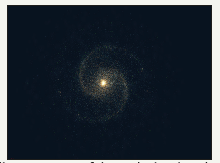
Figure 2:Illustrates one of the Galaxy radii in the universe (4.8KPc Core, 12KPc Disk, 24KPc Intergalactic medium).
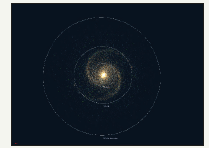
Figure 3:Illustrates graph of Stars mass distribution in the galaxy.
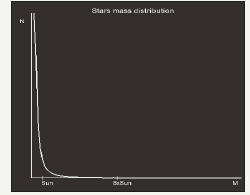
Planets and its Information
A simulation was performed for a galaxy and below are the planets that were found including planets data and planets location [3].
Sun Earth
Figure 4:Illustrates Sun, earth planet orbit and habitable zone
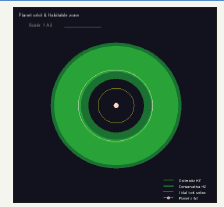
Figure 5:Illustrates Sun, earth planet position (view 1).
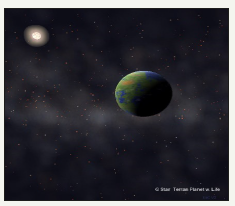
Figure 6:Illustrates Sun, earth planet position (view 2).
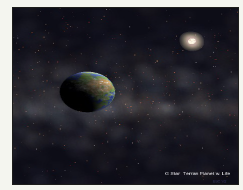
Earth consists of about seventy percent of its surface is covered with water. Earth orbits middle age star called the sun which is estimated about billion years old and expected for several billion years more [4]; (Figure 4-6).
A. Earth Planetary data: [4]
B. Tech. civ. for 0.0000001GY
C. Rocky planet, transparent atmosphere
D. Age 4.5GY/10.0GY lifetime
E. Star type G, mass 1.0 Sun mass
F. Star temperature 5780K, luminosity 0.99 L Sun 9 planets, o/w
G. Planet mass 1.0, radius 1.0xEarth
H. 0.3 core (Fe)0.7 rock 0.00 water
I. Average surface magnetic field 35micro Tesla
J. Gravity 1.0g
K. Escape velocity 11.2km/s
L. Semi-major axis 1.0AU, eccentricity 0.002
M. Tidal lock radius 0.5AU (time for tidal lock 54.4GY)
N. HZ (conservative) 0.95-1.67AU
O. HZ (optimistic) 0.75-1.76AU
P. Periastron 0.9AU, apastron 1.02AU
Q. Orbital period 365 days
R. Planet rotation: 0.0000073rad/sec (day cycle 24.0 hours)
S. Temperature 286,290K (1317C)
T. Stellar flux 1353w/m2 (0.99 of sun/Earth flux)
U. Effective temp 255°K average
V. Greenhouse temperature 33 °C
W. Albedo-0.3, opacity-2.5
X. Gas average thermal/escape velocity ratio: (gas escape if >0.125)
Y. O2: 0.03CH4, O: 0.05He, H2: 0.14 H: 0.19
Z. (He, H2 escape)
Sun Venus
Figure 7:Illustrates Sun, Venus planet orbit and habitable zone.
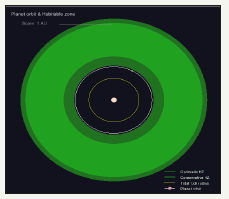
Figure 8:Illustrates Sun, Venus planet position (view 1).
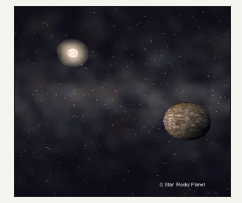
Figure 9:Illustrates Sun, Venus planet position (view 2).
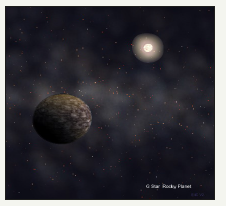
Venus is one of the hottest stars in the solar system and it’s not the planet closest to the sun. Because of its dense atmosphere heat gets trapped in a runaway version which ends in greenhouse effect.
As a result, temperature on Venus could reach 870° Fahrenheit [5]; (Figure 7-9).
A. Venus Planetary data [6]
B. Rocky
C. Rocky planet, thick atmosphere (CO2, CH4, vapor H2O) with clouds
D. Age 4.5GY/10.0GY lifetime
E. Star type G, mass 1.0Sun mass
F. Star temperature 5780K, luminosity 0.99LSun 9 planets, o/w
G. Planet mass 0.8, radius 0.9xEarth
H. 0.3 core (Fe) 0.7rock 0.00 water
I. Average surface magnetic field 18 micro Tesla
J. Gravity 0.9g
K. Escape velocity 10.4km/s
L. Semi-major axis 0.7AU, eccentricity 0.01
M. Tidal lock radius 0.5AU (time for tidal lock 9.1GY)
N. HZ (conservative) 0.95-1.67AU
O. HZ (optimistic) 0.75-1.76AU
P. Periastron 0.72AU, apastron 0.73AU
Q. Orbital period 225 days
R. Planet rotation: -0.0000038 rad/sec (day cycle 45.9 hours)
S. Temperature 734,735K (461,462C)
T. Stellar flux 2588w/m2 (1.90 of sun/Earth flux)
U. Effective temp 184°K average
V. Greenhouse temperature 550 °C
W. Albedo 0.9, opacity 1000.0
X. Gas average thermal/escape velocity ratio: (gas escape if >0.125)
Y. O2: 0.04CH4, O: 0.06He, H2: 0.16 H: 0.23
Z. (He, H2 escape)
Sun Mars
Figure 10:Illustrates Sun, Mars planet orbit and habitable zone.
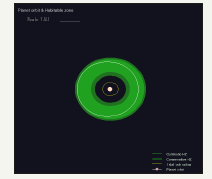
Figure 11:Illustrates Sun, Mars planet position (view 1).
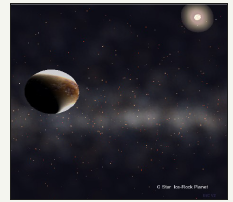
Figure 12:Illustrates Sun, Mars planet position (view 2).
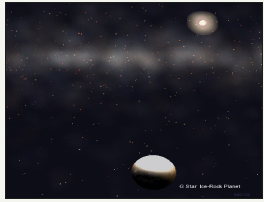
Mars is the fourth planet from the sun. The bright rust colour is due to iron rich minerals. As per NASA, the iron minerals oxidize, or rust, causing the soil to look red. Cold, thin atmosphere means liquid water may not exist on the surface [7]; (Figure 10-12).
A. Mars Planetary data [8]
B. Rocky
C. Rocky planet, transparent atmosphere
D. Age 4.5GY/10.0GY lifetime
E. Star type G, mass 1.0Sun mass
F. Star temperature 5780K, luminosity 0.99LSun 9planets, o/w
G. Planet mass 0.1, radius 0.5xEarth
H. 0.1 core (Fe) 0.9rock 0.00 water
I. Average surface magnetic field 6 micro Tesla
J. Gravity 0.4g
K. Escape velocity 5.0km/s
L. Semi-major axis 1.5AU, eccentricity 0.09
M. Tidal lock radius 0.4AU (time for tidal lock 3382.8GY)
N. HZ (conservative) 0.9-1.67AU
O. HZ (optimistic) 0.75-1.76AU
P. Periastron 1.38AU, apastron 1.67AU
Q. Orbital period 687 days
R. Planet rotation: 0.0000049rad/sec (day cycle 35.8 hours)
S. Temperature 206,226K (-67, -47C)
T. Stellar flux 582 w/m2 (0.43 of sun/Earth flux)
U. Effective temp 210°K average
V. Greenhouse temperature 5 °C
W. Albedo 0.3, opacity 0.3
X. Gas average thermal/escape velocity ratio: (gas escape if >0.125)
Y. O2: 0.07CH4, O: 0.10He, H2: 0.28 H: 0.40
Z. (He, H2 escape)
Gliese 163 c
Figure 13:Illustrates Gliese 163 c planet orbit and habitable zone.
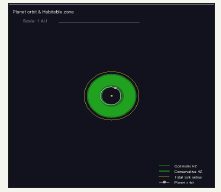
Figure 14:Illustrates Gliese 163 c planet position (view 1).
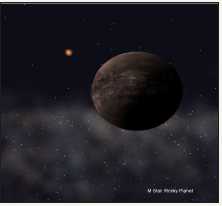
Figure 15:Illustrates Gliese 163 c planet position (view 2).
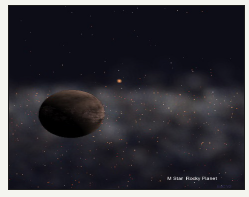
Gliese 163 c is newly discovered exoplanet can be potentially habitable exoplanet and may be one of the top contenders to support life beyond Earth It weighs about seven times the mass of Earth and it could be rocky planet or dwarfed gas giant according to researchers [9]; (Figure 13-15).
A. Gliese 163c planetary data [10]
B. Rocky
C. Age 0.8GY/98.8GY lifetime
D. Star type M, mass 0.4Sun mass
E. Star temperature 3582K, luminosity 0.02 L Sun 3 planets, o/w
F. Planet mass 6.8, radius 1.6xEarth
G. Composition unknown
H. Magnetic field unknown
I. Gravity 2.5g assuming Earth composition
J. Escape velocity 22.8km/s
K. Semi-major axis 0.1AU, eccentricity 0.10
L. Tidal lock radius 0.3AU (time for tidal lock 0.0 GY)
M. HZ (conservative) 0.14-0.29AU
N. HZ (optimistic) 0.12-0.31AU
O. Periastron 0.11AU, apastron 0.14AU
P. Orbital period 26 days
Q. Planet is tidally locked
R. Temperature 295,323K (225 °C)
S. Stellar flux 1816w/m2 (1.33 of sun/Earth flux)
T. Effective temp 275°K average
U. Greenhouse temperature 33 ℃ assumed
V. Albedo 0.3, assumed
W. Gas average thermal/escape velocity ratio: (gas escape if >0.125)
X. O2: 0.02CH4, O: 0.03He, H2: 0.07 H: 0.10
Gliese 581g
Figure 16:Illustrates Gliese 581 g planet orbit and habitable zone
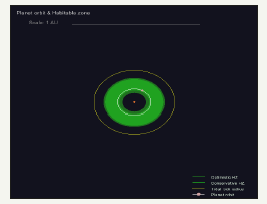
Figure 17:Illustrates Gliese 581 g planet position (view 1).
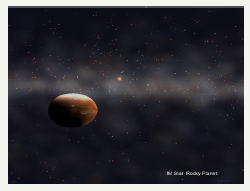
Figure 18:Illustrates Gliese 581 g planet position (view 2).
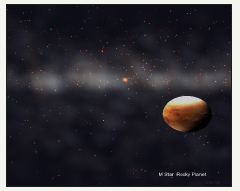
Gliese 581g could be potentially habitable planet if it exists. It is an extra-solar planet within a planetary system that is around twenty light years from Earth. First it was announced in September 2010 as a planet close to Earth’s mass in the habitable zone but at this time it is doubted to exist [11]; (Figure 16-18).
A. Gliese 581g planetary data [12]
B. Rocky
C. Age 2.0GY/186.9GY lifetime
D. Star type M, mass 0.3Sun mass
E. Star temperature 3476K, luminosity 0.01LSun
F. Planet mass 2.2, radius 1.2xEarth
G. Composition unknown
H. Magnetic field unknown
I. Gravity 1.4g assuming Earth composition
J. Escape velocity 14.9km/s
K. Semi-major axis 0.1AU, eccentricity 0.00
L. Tidal lock radius 0.3AU (time for tidal lock 0.0GY)
M. HZ (conservative) 0.12-0.23AU
N. HZ (optimistic) 0.09-0.24AU
O. Periastron 0.13AU, apastron 0.13AU
P. Orbital period 31 days
Q. Planet is tidally locked
R. Temperature 271,271K (-2, -2 C)
S. Stellar flux 1023w/m2 (0.75 of sun/Earth flux)
T. Effective temp 238°K average
U. Greenhouse temperature 33 °C assumed
V. Albedo 0.3 assumed
W. Gas average thermal/escape velocity ratio: (gas escape if >0.125)
X. O2: 0.02CH4, O: 0.03He, H2: 0.10 H: 0.14
Y. (H escape)
Gliese 3293b
Figure 19:Illustrates Gliese 3293 b planet orbit and habitable zone.
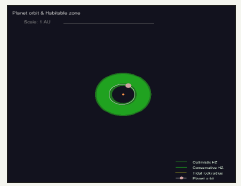
Figure 20:Illustrates Gliese 3293 b planet position (view 1).
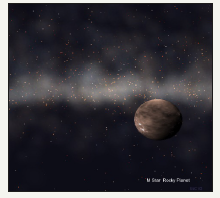
Figure 21:Illustrates Gliese 3293 b planet position (view 2).
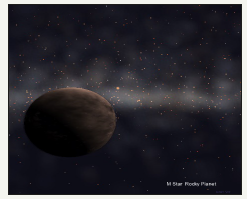
Gliese 3293b was discovered on November 15, 2017 and it is a star in the constellation of Eridanus. It is orbited by four planets. It is estimated that it is significantly smaller and cooler than sun. The estimated distance from earth would be 59 light years [13]; (Figure 19-21).
A. Gliese 3293 b planetary data [14]
B. Rocky?
C. Age 0.0GY/87.5GY lifetime
D. Star type M, mass 0.4Sun mass
E. Star temperature 3594K, luminosity 0.02LSun 4 planets, o/w
F. Planet mass 24.2, radius 3.2xEarth
G. Composition unknown
H. Magnetic field unknown
I. Gravity 2.4g assuming Earth composition
J. Escape velocity 31.0km/s
K. Semi-major axis 0.1AU, eccentricity 0.09
L. Tidal lock radius 0.0AU (time for tidal lock 0.0 GY)
M. HZ (conservative) 0.15-0.30AU
N. HZ (optimistic) 0.12-1.32AU
O. Periastron 0.13AU, apastron 0.16AU
P. Orbital period 31 days
Q. Planet rotation: 0.000124rad/sec (day cycle 14.1 hours)
R. Temperature 283,307K (1034C)
S. Stellar flux 1479w/m2 (1.09 of sun/Earth flux)
T. Effective temp 26°K average
U. Greenhouse temperature 33 °C assumed
V. Albedo 0.3 assumed
W. Gas average thermal/escape velocity ratio: (gas escape if >0.125)
X. O2: 0.01CH4, O: 0.02He, H2: 0.05H: 0.07
Gliese 667C c
Figure 22:Illustrates Gliese 667C c planet orbit and habitable zone.
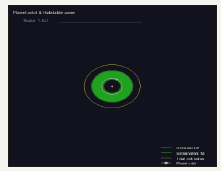
Figure 23:Illustrates Gliese 667C c planet position (view 1).
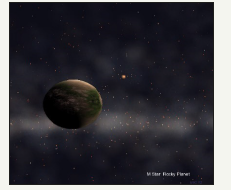
Figure 24:Illustrates Gliese 667C c planet position (view 2).
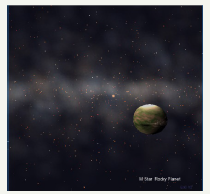
Gliese 667C c was first announced on November 21, 2011. It is one component of a triple star system. It has six planets orbit the star and three planets are expected to be tidally locked [15]; (Figure 22-24).
A. Gliese 667C c planetary data [16]
B. Rocky
C. Age 2.0GY/159.9GY lifetime
D. Star type M, mass 0.3 Sun mass
E. Star temperature 3509K, luminosity 0.01LSun 6 planets, o/w
F. Planet mass 3.8, radius 1.5xEarth
G. Composition unknown
H. Magnetic field unknown
I. Gravity 1.7g assuming Earth composition
J. Escape velocity 17.8km/s
K. Semi-major axis 0.1AU, eccentricity 0.02
L. Tidal lock radius 0.3AU (time for tidal lock 0.0GY)
M. HZ (conservative) 0.13-0.24AU
N. HZ (optimistic) 0.10-0.26AU
O. Periastron 0.12AU, apastron 0.13AU
P. Orbital period 28 days
Q. Planet is tidally locked
R. Temperature 282287K (914 C)
S. Stellar flux 1227w/m2 (0.94 of sun/Earth flux)
T. Effective temp 252° K average
U. Greenhouse temperature 33 °C assumed
V. Albedo 0.3 assumed
W. Gas average thermal/escape velocity ratio: (gas escape if >0.125)
X. O2: 0.02CH4, O: 0.03He, H2: 0.09 H: 0.12
Gliese 667Cf
Gliese 667C f is a nearby triple star system in the constellation of Scorpius that is about twenty-two light years away. It hosts at least six planets and in that three of them are Super Earth that are located in the habitable zone [17]; (Figure 25-27).
Figure 25:Illustrates Gliese 667C f planet orbit and habitable zone.
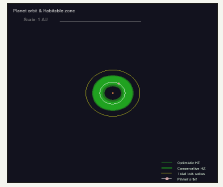
Figure 26:IIllustrates Gliese 667C f planet orbit and habitable zone.
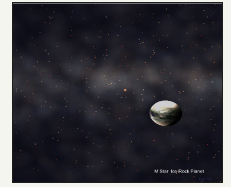
Figure 27:Illustrates Gliese 667C f planet position (view 2).
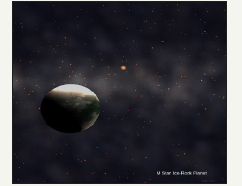
A. Gliese 667C f planetary data [18]
B. Rocky
C. Age 2.0GY/159.9GY lifetime
D. Star type M, mass 0.3Sun mass
E. Star temperature 3509K, luminosity 0.01LSun 6 planets, o/w
F. Planet mass 2.7, radius 1.3xEarth
G. Composition unknown
H. Magnetic field unknown
I. Gravity 1.6g assuming Earth composition
J. Escape velocity 16.1km/s
K. Semi-major axis 0.2AU, eccentricity 0.03
L. Tidal lock radius 0.3AU (time for tidal lock 0.0GY)
M. HZ (conservative) 0.13-0.24AU
N. HZ (optimistic) 0.10-0.26AU
O. Periastron 0.15AU, apastron 0.16AU
P. Orbital period 39 days
Q. Planet is tidally locked
R. Temperature 255262K (-18, -11 C)
S. Stellar flux 820w/m2 (0.60 of sun/Earth flux)
T. Effective temp 225°K average
U. Greenhouse temperature 33 °C assumed
V. Albedo 0.3 assumed
W. Gas average thermal/escape velocity ratio: (gas escape if >0.125)
X. O2: 0.02CH4, O: 0.03He, H2: 0.09 H: 0.13
Y. (H escape)
HD 40307g
HD 40307g is classified as a Super Earth and it’s the sixth planet from its sun. It is located around forty-four light years from Earth and it hosts around six planets including one at an orbital distance just right to support life. HD40307 is distant enough star to likely be rotating on its own axis. This makes Earth like day and night cycle likely on the planet which increases the likelihood that life could have evolved there [19]; (Figure 28-30).
Figure 28:Illustrates HD 40307 g planet orbit and habitable zone.
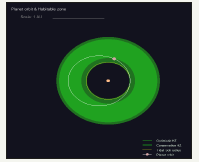
Figure 29:Illustrates HD 40307 g planet position (view 1).
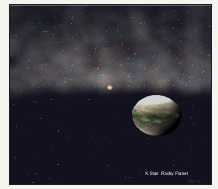
Figure 30:Illustrates HD 40307 g planet position (view 2).
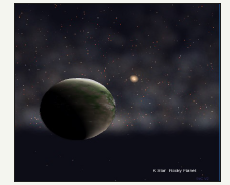
A. HD 40307 g planetary data [20]
B. Rocky?
C. Age 1.2GY/19.2GY lifetime
D. Star type K, mass 0.8Sun mass
E. Star temperature 4819K, luminosity 0.27LSun 6 planets, o/w
F. Planet mass 7.1, radius 2.4xEarth
G. Composition unknown
H. Magnetic field unknown
I. Gravity 1.2g assuming Earth composition
J. Escape velocity 19.2km/s
K. Semi-major axis 0.6AU, eccentricity 0.29
L. Tidal lock radius 0.4AU (time for tidal lock 1.4GY)
M. HZ (conservative) 0.50-0.95AU
N. HZ (optimistic) 0.41-1.00AU
O. Periastron 0.43AU, apastron 0.77AU
P. Orbital period 193 days
Q. Planet rotation: 0.0000015 rad/sec (day cycle 113.1 hours)
R. Temperature 242315K (-31, 42C)
S. Stellar flux 1026 w/m2 (0.75 of sun/Earth flux)
T. Effective temp 23°K average
U. Greenhouse temperature 33 °C assumed
V. Albedo 0.3 assumed
W. Gas average thermal/escape velocity ratio: (gas escape if >0.125)
K2-3d
Figure 31:Illustrates K2-3 d planet orbit and habitable zone.
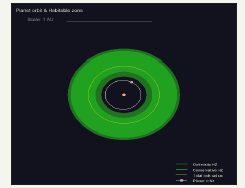
Figure 32:Illustrates K2-3 d planet position (view 1).

Figure 33:Illustrates K2-3 d planet position (view 2).
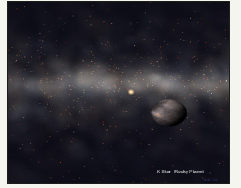
K2-3d is also known as EPIC 201367065 d is a gigantic solid exoplanet and is located around 137 light years away from Earth in the constellation of Leo. It is estimated around 1.5 times the size of Earth and because it is a cooler start it could host liquid water [21]; (Figure 31-33).
A. K2-3d planetary data [22]
B. Rocky?
C. Age 1.0GY/34.4GY lifetime
D. Star type K, mass 0.6 Sun mass
E. Star temperature 4244K, luminosity 0.11LSun 3 planets, o/w
F. Planet mass 7.5, radius 1.6xEarth
G. Composition unknown
H. Magnetic field unknown
I. Gravity 2.9g assuming Earth composition
J. Escape velocity 24.2km/s
K. Semi-major axis 0.2AU, eccentricity 0.04
L. Tidal lock radius 0.4AU (time for tidal lock 0.0GY)
M. HZ (conservative) 0.32-0.62AU
N. HZ (optimistic) 0.26-0.65AU
O. Periastron 0.20AU, apastron 0.22AU
P. Orbital period 45 days
Q. Planet is tidally locked
R. Temperature 344359K (7186C)
S. Stellar flux 3287w/m2 (2.42 of sun/Earth flux)
T. Effective temp 318°K average
U. Greenhouse temperature 33 °C assumed
V. Albedo 0.3 assumed
W. Gas average thermal/escape velocity ratio: (gas escape if >0.125)
X. O2: 0.02CH4, O: 0.03He, H2: 0.07 H: 0.10
Kepler 22b
Figure 34:Illustrates Kepler 22 b planet orbit and habitable zone.
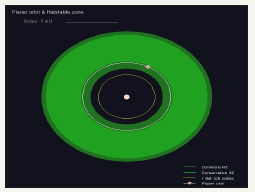
Figure 35:Illustrates Kepler 22 b planet position (view 1).
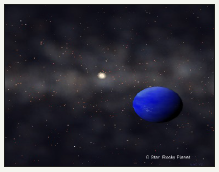
Figure 36:Illustrates Kepler 22 b planet position (view 2).
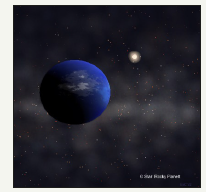
Kepler 22 b was announced in February 2011 and is estimated around 2.4times larger in diameter in Earth. It is found in the constellation of Cygnus. It has an orbit that is similar to Earth and it also orbits a G-star class sun like our sun, but exoplanet’s star is little bit smaller and colder [23]; (Figure 34-36).
A. Kepler 22 b planetary data [24]
B. Water world?
C. Age 4.0GY/10.8GY lifetime
D. Star type G, mass 1.0Sun mass
E. Star temperature 5624K, luminosity 0.84 L Sun 1 planet, o/w
F. Planet mass 5.8, radius 2.4xEarth
G. Composition unknown
H. Magnetic field unknown
I. Gravity 1.0g assuming Earth composition
J. Escape velocity 17.5km/s
K. Semi-major axis 0.8AU, eccentricity 0.00
L. Tidal lock radius 0.5AU (time for tidal lock 8.9GY)
M. HZ (conservative) 0.85-1.56AU
N. HZ (optimistic) 0.70-1.65AU
O. Periastron 0.85AU, apastron 0.85AU
P. Orbital period 290 days
Q. Planet rotation: 0.0000044 rad/sec (day cycle 39.5 hours)
R. Temperature 298298K (25,25C)
S. Stellar flux 1592w/m2 (1.17 of sun/Earth flux)
T. Effective temp 265° K average
U. Greenhouse temperature 33 °C assumed
V. Albedo 0.3 assumed
W. Gas average thermal/escape velocity ratio: (gas escape if >0.125)
X. O2: 0.02CH4, O: 0.03He, H2: 0.09 H: 0.13
Y. (H escape)
Kepler 442b
Figure 37:Illustrates Kepler 442 b planet orbit and habitable zone.
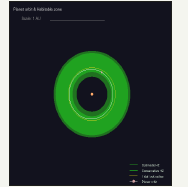
Figure 38:Illustrates Kepler 442 b planet position (view 1).
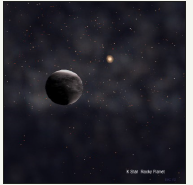
Figure 39:Illustrates Kepler 442 b planet position (view 2).
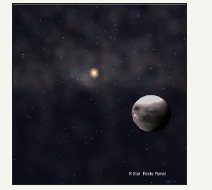
Kepler 442 b was announced on January 2015 and is located about 1,120 light years from Earth in the constellation Lyra. It was located within the habitable zone of its star where liquid water could exist. It’s an exoplanet with a mass and radius bigger than Earth but smaller than of ice giants Uranus and Neptune [25]; (Figure 37-39).
A. Kepler 442b planetary data: [25]
B. Rocky
C. Age 2.9GY/34.6GY lifetime
D. Star type K, mass 0.6 Sun mass
E. Star temperature 4277K, luminosity 0.12LSun
F. Planet mass 2.6, radius 1.3xEarth
G. Composition unknown
H. Magnetic field unknown
I. Gravity 1.5g assuming Earth composition
J. Escape velocity 15.6km/s
K. Semi-major axis 0.2AU, eccentricity 0.04
L. Tidal lock radius 0.4AU (time for tidal lock 0.3GY)
M. HZ (conservative) 0.35-0.66AU
N. HZ (optimistic) 0.28-0.70AU
O. Periastron 0.38AU, apastron 0.42AU
P. Orbital period 118 days
Q. Planet is tidally locked
R. Temperature 266276K (-7, 3C)
S. Stellar flux 1021w/m2 (0.75 of sun/Earth flux)
T. Effective temp 238°K average
U. Greenhouse temperature 33 °C assumed
V. Albedo 0.3 assumed
W. Gas average thermal/escape velocity ratio: (gas escape if >0.125)
X. O2: 0.02CH4, O: 0.03He, H2: 0.10 H: 0.13
Y. (H escape)
Kepler 452b
Figure 40:Illustrates Kepler 452 b planet orbit and habitable zone..
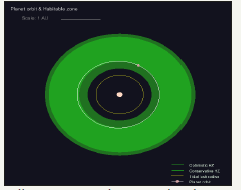
Figure 41:Illustrates Kepler 452 b planet position (view 1).
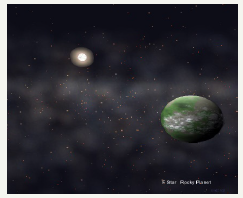
Figure 42:Illustrates Kepler 452 b planet position (view 2).
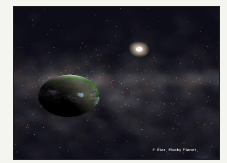
Kepler 452b was announced by NASA on July 23, 2015. It is located in the constellation Cygnus. It is sixty percent wider than Earth and probably around five times more massive, hence its surface gravity is considerably stronger. However, recent study in 2018 by Mullaly et al. implied that statistically Kepler 452 b has not been proven to exist and must still be considered [26]; (Figure 40-42).
A. Kepler 454 b planetary data [27]
B. Rocky?
C. Age 5.0GY/9.1GY lifetime
D. Star type F, mass 1.0Sun mass
E. Star temperature 5971K, luminosity 0.20LSun 1 planet
F. Planet mass 5.0, radius 1.6xEarth
G. Composition unknown
H. Magnetic field unknown
I. Gravity 2.0g assuming Earth composition
J. Escape velocity 19.8km/s
K. Semi-major axis 1.0AU, eccentricity 0.04
L. Tidal lock radius 0.6AU (time for tidal lock 21.2GY)
M. HZ (conservative) 0.99-1.81AU
N. HZ (optimistic) 0.81-1.91AU
O. Periastron 1.01AU, apastron 1.08AU
P. Orbital period 384 days
Q. Planet rotation: 0.0000085 rad/sec (day cycle 20.6 hours)
R. Temperature 290,299K (17, 26C)
S. Stellar flux 1495w/m2 (1.10 of sun/Earth flux)
T. Effective temp 261°K average
U. Greenhouse temperature 33 °C assumed
V. Albedo 0.3 assumed
W. Gas average thermal/escape velocity ratio: (gas escape if > 0.125)
X. O2: 0.02CH4, O: 0.03He, H2: 0.08 H: 0.11 Kepler 62e
Kepler 62e
Figure 43:Illustrates Kepler 62 e planet orbit and habitable zone.
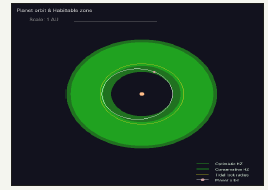
Figure 44:Illustrates Kepler 62 e planet position (view 1).
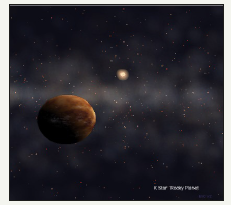
Figure 45:Illustrates Kepler 62 e planet position (view 2).
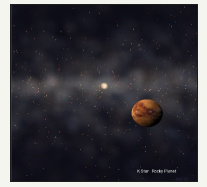
Kepler 62e is about 1.5 times the size of Earth. It probably has a very cloudy sky and is warm humid all the way to the polar regions. It is located about 1200 light years from Earth in the constellation of Lyra. Kepler 62e and Kepler 62 f are the two of five potential planets [28]; (Figure 43-45).
A. Kepler 62 e planetary data [29]
B. Rocky?
C. Age 4.0GY/25.3GY lifetime
D. Star type K, mass 0.7 Sun mass
E. Star temperature 4612K, luminosity 0.22LSun 6 planets, o/w
F. Planet mass 4.5, radius 1.5xEarth
G. Composition unknown
H. Magnetic field unknown
I. Gravity 2.1g assuming Earth composition
J. Escape velocity 19.5km/s
K. Semi-major axis 0.4AU, eccentricity 0.13
L. Tidal lock radius 0.5AU (time for tidal lock 0.2GY)
M. HZ (conservative) 0.47-0.86AU
N. HZ (optimistic) 0.37-0.91AU
O. Periastron 0.37AU, apastron 0.48AU
P. Orbital period 122 days
Q. Planet is tidally locked
R. Temperature 284,319K (11, 46C)
S. Stellar flux 1619w/m2 (1.19 of sun/Earth flux)
T. Effective temp 267°K average
U. Greenhouse temperature 33 °C assumed
V. Albedo 0.3 assumed
W. Gas average thermal/escape velocity ratio: (gas escape if >0.125)
X. O2: 0.02CH4, O: 0.03He, H2: 0.08H: 0.12
Kepler 62f
Kepler 62f was announced in the year April 2013 as a part of larger discovery of seven exoplanets Kepler-62 and Kepler 69. It can be a potentially an Earth like planet about 1,200 light years. It is 1.4 times bigger than Earth and in orbit around a star that is somewhat dimmer and smaller than our sun [30]; (Figure 46-48).
Figure 46:Illustrates Kepler 62 f planet orbit and habitable zone.
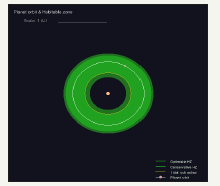
Figure 47:Illustrates Kepler 62 f planet position (view 1).
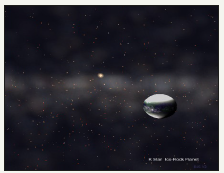
Figure 48:Illustrates Kepler 62 f planet position (view 2).
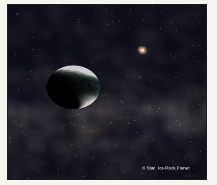
A. Kepler 62 f planetary data [31]
B. Rocky
C. Age 4.0GY/25.3GY lifetime
D. Star type K, mass 0.7 Sun mass
E. Star temperature 4612K, luminosity 0.22LSun 6 planets, o/w
F. Planet mass 2.8, radius 1.4xEarth
G. Composition unknown
H. Magnetic field unknown
I. Gravity 1.4g assuming Earth composition
J. Escape velocity 15.8km/s
K. Semi-major axis 0.7AU, eccentricity 0.00
L. Tidal lock radius 0.5AU (time for tidal lock 7.9GY)
M. HZ (conservative) 0.47-0.86AU
N. HZ (optimistic) 0.37-0.91AU
O. Periastron 0.72AU, apastron 0.72AU
P. Orbital period 267 days
Q. Planet rotation: 0.0000046 rad/sec (day cycle 37.6 hours)
R. Temperature 238,238K (-35, -35C)
S. Stellar flux 570w/m2 (0.42 of sun/Earth flux)
T. Effective temp 205°K average
U. Greenhouse temperature 33 °C assumed
V. Albedo 0.3 assumed
W. Gas average thermal/escape velocity ratio: (gas escape if >0.125)
X. O2: 0.02CH4, O: 0.03He, H2: 0.09H: 0.12
Kepler 186f
Figure 49:
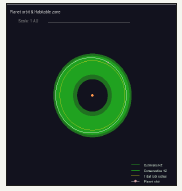
Figure 50:
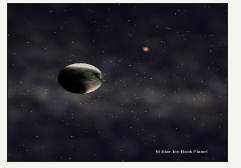
Figure 51:
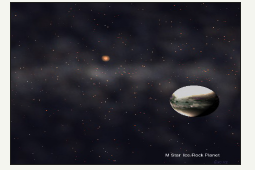
Kepler 186f was announced on April 17, 2014 and it is estimated that it’s 1.1 times bigger than Earth. Kepler 186 is relatively cool, red dwarf star and it still lies within habitable zone. It’s brightness at noon on the surface of the planet is comparable to that of the sun an hour before sunset on Earth according to NASA [32]; (Figure 49-51).
A. Kepler 186 f planetary data [33]
B. Rocky
C. Age 4.5GY/62.6GY lifetime
D. Star type M, mass 0.5Sun mass
E. Star temperature 3771K, luminosity 0.05LSun 5 planets, o/w
F. Planet mass 1.4, radius 1.1xEarth
G. Composition unknown
H. Magnetic field unknown
I. Gravity 1.2g assuming Earth composition
J. Escape velocity 12.9km/s
K. Semi-major axis 0.4AU, eccentricity 0.04
L. Tidal lock radius 0.4AU (time for tidal lock 1.2GY)
M. HZ (conservative) 0.24-0.45AU
N. HZ (optimistic) 0.19-0.48AU
O. Periastron 0.41AU, apastron 0.45AU
P. Orbital period 150 days
Q. Planet rotation: 0.000000 rad/sec (day cycle 3592.3 hours)
R. Temperature 216,223K (-57, -50C)
S. Stellar flux 385w/m2 (0.28 of sun/Earth flux)
T. Effective temp 186°K average
U. Greenhouse temperature 33 °C assumed
V. Albedo 0.3 assumed
W. Gas average thermal/escape velocity ratio: (gas escape if >0.125)
X. O2: 0.03CH4, O: 0.04He, H2: 0.10H: 0.14
1. (H escape)
Kepler 283c
Kepler 283 c is an exoplanet orbiting the K type star and its orbital period is 94 days [34] (Figure 52-54).
Figure 52:Illustrates Kepler 283 c planet orbit and habitable zone
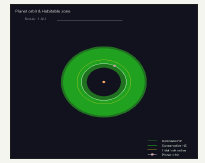
Figure 53:Illustrates Kepler 283 c planet position (view 1).
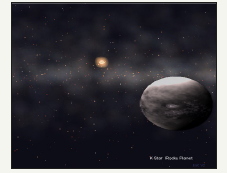
Figure 54:Illustrates Kepler 283 c planet position (view 2).
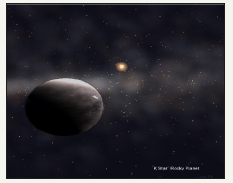
A. Kepler 283 c planetary data [34]
B. Rocky?
C. Age 2.0GY/35.9GY lifetime
D. Star type K, mass 0.6Sun mass
E. Star temperature 4222K, luminosity 0.11LSun 2 planets, o/w
F. Planet mass 4.0, radius 1.8xEarth
G. Composition unknown
H. Magnetic field unknown
I. Gravity 1.2g assuming Earth composition
J. Escape velocity 16.6km/s
K. Semi-major axis 0.3AU, eccentricity 0.00
L. Tidal lock radius 0.4AU (time for tidal lock 0.1GY)
M. HZ (conservative) 0.33-0.62AU
N. HZ (optimistic) 0.26-0.66AU
O. Periastron 0.34AU, apastron 0.34AU
P. Orbital period 94 days
Q. Planet is tidally locked
R. Temperature 282,282K (9,9C)
S. Stellar flux 1238w/m2 (0.91 of sun/Earth flux)
T. Effective temp 249°K average
U. Greenhouse temperature 33 °C assumed
V. Albedo 0.3 assumed
W. Gas average thermal/escape velocity ratio: (gas escape if >0.125)
X. O2: 0.02CH4, O: 0.03He, H2: 0.09H: 0.13
Y. (H escape)
Kepler 438b<
Figure 55:
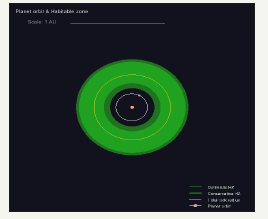
Figure 56:
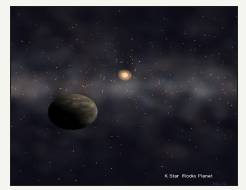
Figure 57:
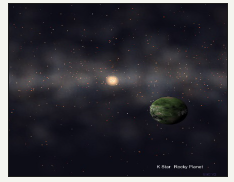
Kepler 438b is near Earth sized exoplanet likely to be Rocky orbiting on the inner edge of the habitable zone of the red dwarf planet. Kepler 438b was announced by NASA on January 06, 2015. It is approximately 47 light years and it’s located in the constellation Lyra [35]; (Figure 55-57).
A. Kepler 438 b planetary data [35]
B. Rocky
C. Age 4.4GY/46.7GY lifetime
D. Star type K, mass 0.5Sun mass
E. Star temperature 4034K, luminosity 0.08LSun
F. Planet mass 1.3, radius 1.1xEarth
G. Composition unknown
H. Magnetic field unknown
I. Gravity 1.0g assuming Earth composition
J. Escape velocity 12.1km/s
K. Semi-major axis 0.2AU, eccentricity 0.03
L. Tidal lock radius 0.4AU (time for tidal lock 0.0GY)
M. HZ (conservative) 0.30-0.56AU
N. HZ (optimistic) 0.23-0.59AU
O. Periastron 0.16AU, apastron 0.17AU
P. Orbital period 34 days
Q. Planet is tidally locked
R. Temperature 365,376K (92,103C)
S. Stellar flux 4139w/m2 (3.04 of sun/Earth flux)
T. Effective temp 337°K average
U. Greenhouse temperature 33 ℃ assumed
V. Albedo 0.3 assumed
W. Gas average thermal/escape velocity ratio: (gas escape if >0.125)
X. O2: 0.04CH4, O: 0.05He, H2: 0.15 H: 0.21
Y. (He, H2 escape)
Kepler 1229b<
Figure 58:Illustrates Kepler 1229 b planet orbit and habitable zone.
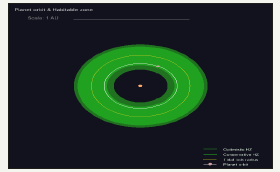
Figure 59:Illustrates Kepler 1229 b planet orbit and habitable zone.
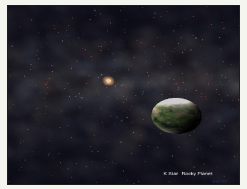
Figure 60:Illustrates Kepler 1229 b planet position (view 2).
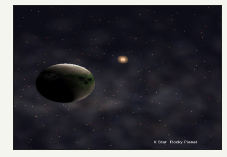
Kepler 1229b was discovered in the year 2016 and in the constellation of Cygnus and it’s located about 77 light years. It’s likely to be rocky orbiting within the habitable zone of the red dwarf star [36]; (Figure 58-60).
A. Kepler 1229 b planetary data [36]
B. Rocky
C. Age 3.7GY/46.7GY lifetime
D. Star type K, mass 0.5 Sun mass
E. Star temperature 4015K, luminosity 0.08LSun 1 planet, o/w
F. Planet mass 2.7, radius 1.4xEarth
G. Composition unknown
H. Magnetic field unknown
I. Gravity 1.4g assuming Earth composition
J. Escape velocity 15.5km/s
K. Semi-major axis 0.3AU, eccentricity 0.00
L. Tidal lock radius 0.4AU (time for tidal lock 0.1GY)
M. HZ (conservative) 0.29-0.55AU
N. HZ (optimistic) 0.23-0.58AU
O. Periastron 0.31AU, apastron 0.31AU
P. Orbital period 87days
Q. Planet is tidally locked
R. Temperature 276,276K (3, 3C)
S. Stellar flux 1107w/m2 (0.81 of sun/Earth flux)
T. Effective temp 243°K average
U. Greenhouse temperature 33 °C assumed
V. Albedo 0.3 assumed
W. Gas average thermal/escape velocity ratio: (gas escape if >0.125)
X. O2: 0.02CH4, O: 0.03He, H2: 0.10 H: 0.14
Y. (H escape)
Proxima Cen b
Proxima Cen b is located about 4.2 light years from Earth and is in the constellation of Centaurus. It was announced in August 2016. It has estimated mass of at least 1.1 times that of the Earth [37]; (Figure 61-63).
Figure 61:Illustrates Proxima Cen b planet orbit and habitable zone.
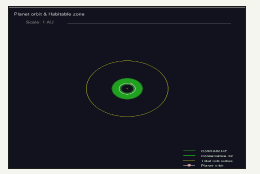
Figure 62:Illustrates Proxima Cen b planet position (view 1).
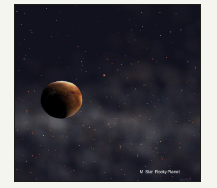
Figure 63:Illustrates Proxima Cen b planet position (view 2).
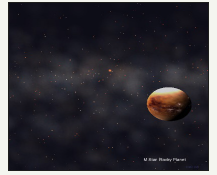
A. Proxima Cen b planetary data: [37]
B. Rocky, water?
C. Age 4.8GY/1884.7GY lifetime
D. Star type M, mass 0.1Sun mass
E. Star temperature 2961K, luminosity 0.00LSun
F. Planet mass 1.3, radius 1.1xEarth
G. Composition unknown
H. Magnetic field unknown
I. Gravity 1.1g assuming Earth composition
J. Escape velocity 12.0km/s
K. Semi-major axis 0.2 AU, eccentricity 0.00
L. Tidal lock radius 0.2AU (time for tidal lock 0.0GY)
M. HZ (conservative) 0.05-0.09AU
N. HZ (optimistic) 0.04-0.10AU
O. Periastron 0.05AU, apastron 0.05AU
P. Orbital period 11 days
Q. Planet is tidally locked
R. Temperature 274,274K (1, 1C)
S. Stellar flux 1078w/m2 (0.79 of sun/Earth flux)
T. Effective temp 241°K average
U. Greenhouse temperature 33 °C assumed
V. Albedo 0.3 assumed
W. Gas average thermal/escape velocity ratio: (gas escape if >0.125)
X. O2: 0.03CH4, O: 0.04He, H2: 0.12 H: 0.17
Y. (H escape)
Tau Ceti e
Tau Ceti is a single star in constellation Cetus and is distance of 11.9 light years from Earth. It is estimated to host five exoplanets [38]; (Figure 64-66).
Figure 64:Illustrates Tau Ceti e planet orbit and habitable zone.
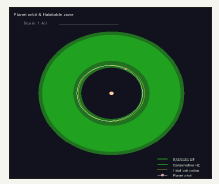
Figure 65:Illustrates Tau Ceti e planet position (view 1).
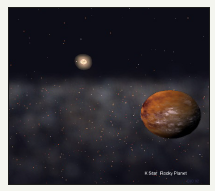
Figure 66:Illustrates Tau Ceti e planet position (view 2).
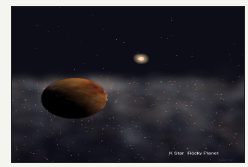
A. Tau Ceti e planetary data: [39]
B. Rocky?
C. Age 5.8GY/18.4GY lifetime
D. Star type K, mass 0.8 Sun mass
E. Star temperature 5007K, luminosity 0.42LSun
F. Planet mass 4.3, radius 1.5xEarth
G. Composition unknown
H. Magnetic field unknown
I. Gravity 2.0g assuming Earth composition
J. Escape velocity 19.2km/s
K. Semi-major axis 0.6AU, eccentricity 0.05
L. Tidal lock radius 0.6AU (time for tidal lock 0.9GY)
M. HZ (conservative) 0.64-1.16AU
N. HZ (optimistic) 0.51-1.23AU
O. Periastron 0.52AU, apastron 0.58AU
P. Orbital period 169 days
Q. Planet is tidally locked
R. Temperature 303,317K (30, 44C)
S. Stellar flux 1882w/m2 (1.38 of sun/Earth flux)
T. Effective temp 277°K average
U. Greenhouse temperature 33 °C assumed
V. Albedo 0.3 assumed
W. Gas average thermal/escape velocity ratio: (gas escape if >0.125)
X. O2: 0.02CH4, O: 0.03He, H2: 0.08 H: 0.12
Wolf 1061c
Figure 67:Illustrates Wolf 1061 c planet orbit and habitable zone.
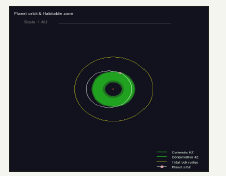
Figure 68:Illustrates Wolf 1061 c planet position (view 1).
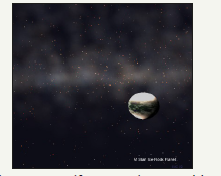
Figure 69:Illustrates Wolf 1061 c planet position (view 2).
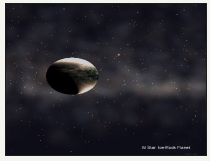
Wolf 1061c is located in the constellation Ophiuchus and is 13.8 light years from Earth. It was announced on December 17, 2015 [40]; (Figure 67-69).
A. Wolf 1061 c planetary data [40]
B. Rocky
C. Age 3.0GY/320.0GY lifetime
D. Star type M, mass 0.3Sun mass
E. Star temperature 3374K, luminosity 0.01LSun 3 planets, o/w
F. Planet mass 5.2, radius 1.6xEarth
G. Composition unknown
H. Magnetic field unknown
I. Gravity 2.0g assuming Earth composition
J. Escape velocity 20.2km/s
K. Semi-major axis 0.2AU, eccentricity 0.19
L. Tidal lock radius 0.3AU (time for tidal lock 0.0GY)
M. HZ (conservative) 0.09-0.19AU
N. HZ (optimistic) 0.07-0.20AU
O. Periastron 0.17AU, apastron 0.24AU
P. Orbital period 67 days
Q. Planet is tidally locked
R. Temperature 190,223K (-83, -50C)
S. Stellar flux 273w/m2 (0.20 of sun/Earth flux)
T. Effective temp 171°K average
U. Greenhouse temperature 33 °C assumed
V. Albedo 0.3 assumed
W. Gas average thermal/escape velocity ratio: (gas escape if >0.125)
X. O2: 0.02CH4, O: 0.02He, H2: 0.07H: 0.09 Kapteyn b
Kapteyn b is one of the oldest planets estimated around 11 billion years old. It was discovered at June 2014 [41]; (Figure 70- 72).
Figure 70:Illustrates Kapteyn b planet orbit and habitable zone.
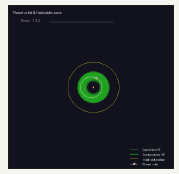
Figure 71:Illustrates Kapteyn b planet position (view 1).
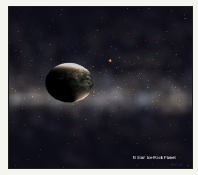
Figure 72:Illustrates Kapteyn b planet position (view 2)
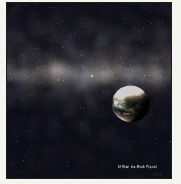
A. Kapteyn b planetary data [41]
B. Rocky
C. Age 6.0GY/238.9GY lifetime
D. Star type M, mass 0.3 Sun mass
E. Star temperature 3520K, luminosity 0.01LSun
F. Planet mass 4.8, radius 1.6xEarth
G. Composition unknown
H. Magnetic field unknown
I. Gravity 1.9 g assuming Earth composition
J. Escape velocity 19.3km/s
K. Semi-major axis 0.2AU, eccentricity 0.21
L. Tidal lock radius 0.4AU (time for tidal lock 0.0GY)
M. HZ (conservative) 0.12-0.24AU
N. HZ (optimistic) 0.10-0.25AU
O. Periastron 0.13AU, apastron 0.20AU
P. Orbital period 47 days
Q. Planet is tidally locked
R. Temperature 229,275K (-44, 2C)
S. Stellar flux 684w/m2 (0.50 of sun/Earth flux)
T. Effective temp 215°K average
U. Greenhouse temperature 33 °C assumed
V. Albedo 0.3 assumed
W. Gas average thermal/escape velocity ratio: (gas escape if >0.125)
X. O2: 0.02CH4, O: 0.03 He, H2: 0.08 H: 0.11
Trappist-1 d
Figure 73:Illustrates Trappist-1 d planet orbit and habitable zone.
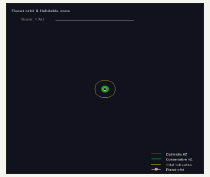
Figure 74:Illustrates Trappist-1 d planet position (view 1).

Figure 75:Illustrates Trappist-1 d planet position (view 2).
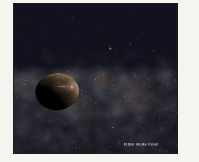
Trappist-1 d was discovered on May 02, 2016. It is approximately 40 light years away from Earth and is located in the constellation of Aquarius. It is the least massive planet of the system and has about 5% of its mass in water, likely in the form of a huge liquid ocean [42]; (Figure 73-75).
A. Trappist-1 d planetary data [42]
B. Rocky
C. Age 0.5GY/5524.3GY lifetime
D. Star type M, mass 0.1Sun mass
E. Star temperature 2609K, luminosity 0.00LSun
F. Planet mass 0.4, radius 0.8xEarth
G. Composition unknown
H. Magnetic field unknown
I. Gravity 0.7g assuming Earth composition
J. Escape velocity 8.2km/s
K. Semi-major axis 0.0AU, eccentricity 0.07
L. Tidal lock radius 0.1AU (time for tidal lock 0.0GY)
M. HZ (conservative) 0.02-0.05AU
N. HZ (optimistic) 0.02-0.05AU
O. Periastron 0.02AU, apastron 0.02AU
P. Orbital period 4 days
Q. Planet is tidally locked
R. Temperature 289,308K (16, 35C)
S. Stellar flux 1570w/m2 (1.15 of sun/Earth flux)
T. Effective temp 265°K average
U. Greenhouse temperature 33 °C assumed
V. Albedo 0.3 assumed
W. Gas average thermal/escape velocity ratio: (gas escape if >0.125)
X. O2: 0.05CH4, O: 0.07He, H2: 0.19 H: 0.27
Y. (He, H2 escape)
Trappist-1 e
Figure 76:Illustrates Trappist-1 e planet orbit and habitable zone.
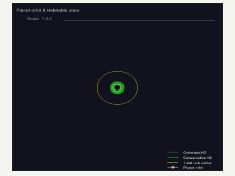
Figure 77:I Illustrates Trappist-1 e planet position (view 1).
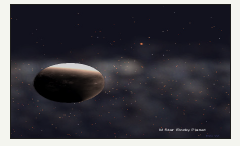
Figure 78:Illustrates Trappist-1 e planet position (view 2).
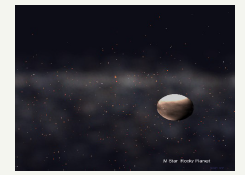
Trappist-1e is approximately 40 light years away from Earth and is located in the constellation of Aquarius. It is estimated that it’s similar to Earth about mass, radius, density, gravity, temperature and stellar flux [43]; (Figure 76-78).
A. Trappist-1 e planetary data [43]
B. Rocky
C. Age 0.5GY/5524.3GY lifetime
D. Star type M, mass 01 Sun mass
E. Star temperature 2609K, luminosity 0.0LSun
F. Planet mass 0.6, radius 0.9xEarth
G. Composition unknown
H. Magnetic field unknown
I. Gravity 0.7g assuming Earth composition
J. Escape velocity 9.2km/s
K. Semi-major axis 0.0AU, eccentricity 0.09
L. Tidal lock radius 0.1AU (time for tidal lock 0.0GY)
M. HZ (conservative) 0.02-0.05AU
N. HZ (optimistic) 0.02-0.05AU
O. Periastron 0.03AU, apastron 0.03AU
P. Orbital period 6 days
Q. Planet is tidally locked
R. Temperature 253,274K (-20, 1C)
S. Stellar flux 883w/m2 (0.65 of sun/Earth flux)
T. Effective temp 230°K average
U. Greenhouse temperature 33 °C assumed
V. Albedo 0.3 assumed
W. Gas average thermal/escape velocity ratio: (gas escape if >0.125)
X. O2: 0.04CH4, O: 0.06He, H2: 0.16 H: 0.23
Y. (He, H2 escape)
Result
In this review paper:
a. Various planets for Earth, Venus, Mars, Gliese 163 c, Gliese 581 g, Gliese 3293 b, Gliese 667C c, Gliese 667C f, HD 40307 g, K2- 3d, Kepler 22 b, Kepler 442 b, Kepler 452 b, Kepler 62 e, Kepler 62 f, Kepler 186 f, Kepler 283 c, Kepler 438 b, Kepler 1229 b, Proxima Cen b, Tau Ceti e, Wolf 1061 c, Kapteyn b, Trappist 1d, Trappist 1 e and it’s view has been studied.
b. Various planets such as Rocky, water world, ice planet and planetary data has been documented.
Acknowledgment
Author would like to thank Prof. Navarun Gupta, Prof. Hassan Bajwa, Prof. Linfeng Zhang and Prof. Hmurcik for their academic support. Author also thanks anonymous reviewers for their comments.
References
- https://en.wikipedia.org/wiki/Galaxy
- Howell E (2015) The 6 most earth-like alien planets. SPACE.com, USA.
- (2017) EtiC Galaxy simulation. Source Forge.
- https://en.wikipedia.org/wiki/Earth
- Charles QC (2017) Planet Venus facts: A hot, hellish & volcanic Planet. SPACE.com, USA.
- https://en.wikipedia.org/wiki/Venus
- Charles QC (2017) Mars facts: Life, water and robots on the red planet. SPACE.com, USA.
- https://en.wikipedia.org/wiki/Mars
- Nola TR (2012) Newfound alien planet a top contender to host life. SPACE.com, USA.
- https://en.wikipedia.org/wiki/Gliese_163_c
- Elizabeth H (2016) Gliese 581g: Potentially habitable planet- if it exists. SPACE.com, USA.
- https://en.wikipedia.org/wiki/Gliese_581g
- https://wikivisually.com/wiki/Gliese_3293
- https://en.wikipedia.org/wiki/Gliese_3293
- Karl T (2013) Potentially habitable planets of star Gliese 667c explained (infographic). SPACE.com, USA.
- https://en.wikipedia.org/wiki/Gliese_667_Cc
- http://www.openexoplanetcatalogue.com/planet/Gliese%20667%20 C%20f/
- https://en.wikipedia.org/wiki/Gliese_667_Cc
- Karl T (2012) Super-earth planet: Potentially habitable alien world explained (infographic). SPACE.com, USA.
- https://en.wikipedia.org/wiki/HD_40307_g
- Sarah L (2016) Potentially habitable planet’s shadow spotted from earth. SPACE.com, USA.
- https://en.wikipedia.org/wiki/K2-3d
- Elizabeth H (2017) Kepler-22b: Facts about exoplanet in habitable zone. SPACE.com, USA.
- https://en.wikipedia.org/wiki/Kepler-22b
- https://en.wikipedia.org/wiki/Kepler-442b
- Mike W (2015) Kepler-452b: What it would be like to live on earth’s cousin. SPACE.com, USA.
- https://en.wikipedia.org/wiki/Kepler-452b
- Elizabeth H (2016) Kepler-62e: Super-earth & possible water world. SPACE.com, USA.
- https://en.wikipedia.org/wiki/Kepler-62e
- Elizabeth H (2016) Kepler-62f: A possible water world. SPACE.com, USA.
- https://en.wikipedia.org/wiki/Kepler-62f
- Miriam K (2014) 5 things to know about alien planet kepler-186f, earth’s cousin. SPACE.com, USA.
- https://en.wikipedia.org/wiki/Kepler-186f
- https://en.wikipedia.org/wiki/Kepler-283c
- https://en.wikipedia.org/wiki/Kepler-438b
- https://en.wikipedia.org/wiki/Kepler-1229b
- https://en.wikipedia.org/wiki/Proxima_Centauri_b
- Mike W (2015) Nearby alien planets not so life-friendly after all. SPACE. com, USA.
- https://en.wikipedia.org/wiki/Tau_Ceti
- https://en.wikipedia.org/wiki/Wolf_1061c
- https://en.wikipedia.org/wiki/Kapteyn_b
- https://en.wikipedia.org/wiki/TRAPPIST-1d
- https://en.wikipedia.org/wiki/TRAPPIST-1e
© 2019 Manu Mitra. This is an open access article distributed under the terms of the Creative Commons Attribution License , which permits unrestricted use, distribution, and build upon your work non-commercially.
 a Creative Commons Attribution 4.0 International License. Based on a work at www.crimsonpublishers.com.
Best viewed in
a Creative Commons Attribution 4.0 International License. Based on a work at www.crimsonpublishers.com.
Best viewed in 







.jpg)






























 Editorial Board Registrations
Editorial Board Registrations Submit your Article
Submit your Article Refer a Friend
Refer a Friend Advertise With Us
Advertise With Us
.jpg)






.jpg)














.bmp)
.jpg)
.png)
.jpg)










.jpg)






.png)

.png)



.png)






